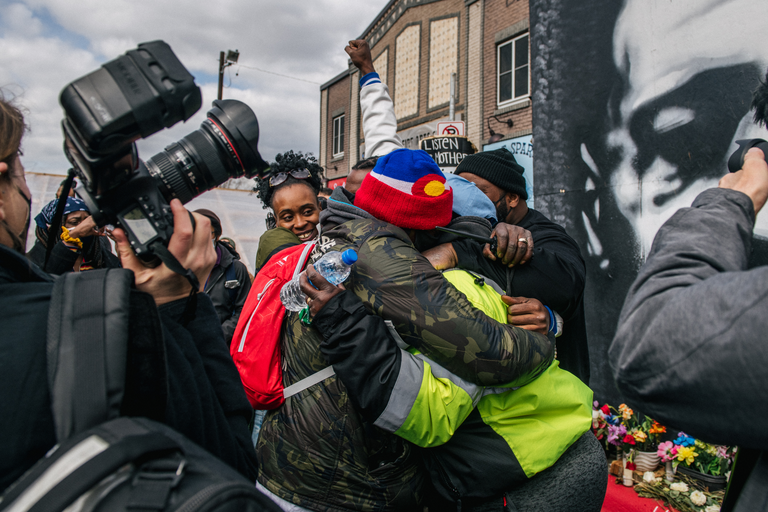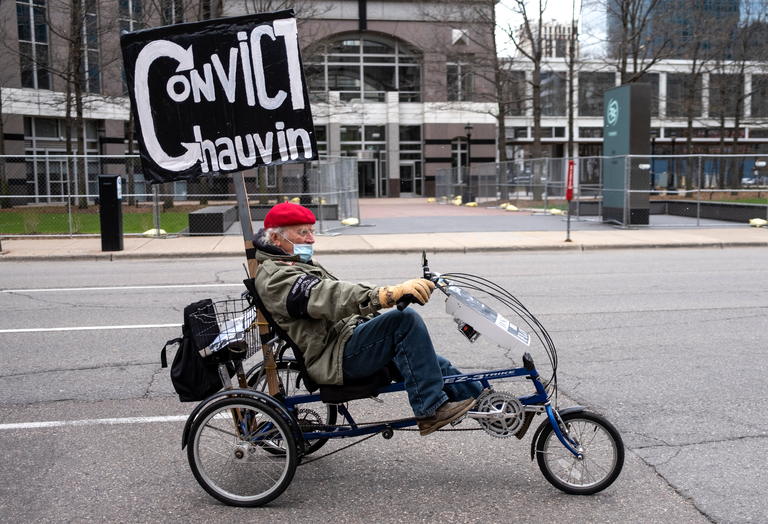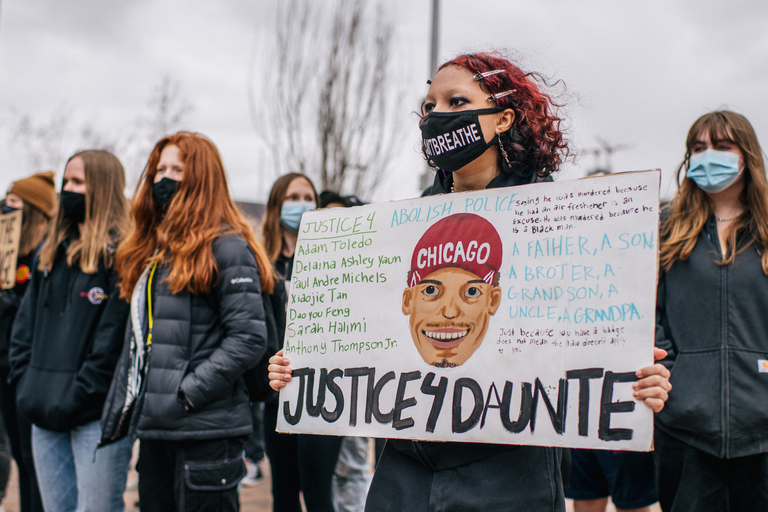
The second black female US senator has become the first black female vice-president. Kamala Harris and Joe Biden have made history.
The former police officer was found guilty on all counts. The verdict was handed down after a three-week-long trial.
Guilty on all counts. This is the verdict reached by the jury in the trial of Derek Chauvin, the police officer who killed George Floyd in Minneapolis on 25th May last year. Chauvin was on trial for manslaughter, third-degree murder, and second-degree murder, crimes whose maximum prison sentences are 10, 25, and 40 years respectively.
After the verdict was announced, US President Joe Biden spoke to Floyd’s family to express his support.
The proceedings in State of Minnesota vs Derek Michael Chauvin began on 29th March, some ten months after Floyd’s murder. Chauvin pled “not guilty” on all counts and was not present at the hearings.
The prosecution brought 38 witnesses to the stand, including several who were there while the murder took place. “It wasn’t right. He was suffering,” stated Darnella Frazier, who, at the time of the incident, was walking with her son to a store near her home. Frazier, who was a minor at the time of the incident, recorded the video of Chauvin kneeling on George Floyd’s neck for 9 minutes and 29 seconds. “It seemed like [Floyd] knew … it was over for him,” Frazier added. “He was terrified. He was suffering.”
The defence, led by attorney Eric Nelson, attempted to present the scene as if Chauvin were the person who was actually in danger, surrounded by a crowd that was becoming increasingly hostile. However, when asked by Nelson if the crowd seemed upset or angry, Genevieve Hansen – an off-duty firefighter who witnessed the murder and asked to assist Floyd multiple times without ever being allowed to do so – responded in very clear terms: “I don’t know if you’ve seen anybody be killed, but it’s upsetting.”
Minneapolis Police Chief Medaria Arradondo testified that Chauvin’s actions towards Floyd “in no way, shape or form” complied with the department’s policy. “It is not part of our training. And it is certainly not part of our ethics or our values”. According to Arradondo, Chauvin’s actions might have been justifiable in the first moments of the encounter, but when Floyd stopped resisting the officer “should have stopped”.
Barry Brodd – a former police officer and use-of-force expert – testified for the defence, claiming that Chauvin “was justified and was acting with objective reasonableness, following Minneapolis Police Department policy”. Brodd, however, admitted that the pressure exerted on the victim’s neck “could be” an example of use-of-force.
One of the main arguments put forth by the defence was that Floyd died due to preexisting health problems and the use of drugs. Retired forensic pathologist David Fowler testified that the cause of death might have been a “sudden cardiac arrhythmia” caused by Floyd’s atherosclerosis and hypertension problems. The use of “fentanyl and methamphetamines” supposedly made the situation worse.
Jonathan Rich, a cardiologist at Chicago’s Northwestern Memorial Hospital, was called as a witness by the prosecution and testified that Floyd died due to a cardiopulmonary arrest caused by low oxygen levels, which were “induced by the prone restraint and positional asphyxiation that he was subjected to”. Andrew Baker, the medical examiner for Hennepin County, where the murder took place, reached the same conclusion.
During the trial, a series of protests and demonstrations took place in the city of Minneapolis, organised, among others, by supporters of the Black Lives Matter movement. As a precaution, the area surrounding the courthouse where the trial was being held was fenced in with temporary concrete barriers, metal fencing, and barbed wire.
The situation became especially tense following the death of Daunte Wright, a young Black man who was killed by police on 11th April in Brooklyn Centre, a neighbourhood north of the city. Wright was hit by a bullet fired by police officer Kimberly Potter, who had stopped him for a traffic violation. Potter claims she did not mean to shoot Wright and mistakenly used her gun instead of her taser.
Soon after the fact, hundreds of people came together to protest the latest in the extremely long series of cases of police violence towards Black people, leading to clashes when law enforcement intervened.
In Minneapolis, many shops and restaurants covered their windows with wood panels to avoid damage caused by further protests. Following Floyd’s death last year, demonstrations led to millions of dollars in damages for businesses, many of which were already struggling due to the coronavirus pandemic.
Siamo anche su WhatsApp. Segui il canale ufficiale LifeGate per restare aggiornata, aggiornato sulle ultime notizie e sulle nostre attività.
![]()
Quest'opera è distribuita con Licenza Creative Commons Attribuzione - Non commerciale - Non opere derivate 4.0 Internazionale.
The second black female US senator has become the first black female vice-president. Kamala Harris and Joe Biden have made history.
Music plays a key role in the Black Lives Matter movement. A journey through the most powerful beats in support of the struggle against racism in the US.
The Upopoy National Ainu Museum has finally opened. With it the indigenous people of Hokkaido are gaining recognition but not access to fundamental rights.
John Lewis was 80 years old and had cancer. He was the last surviving leader of the civil rights movement in the United States.
While the Black Lives Matter movement aims to bring an end to systemic racism, the removal of statues in the US, UK and Europe has drawn controversy.
Black Lives Matter spokesperson Trahern Crews tells us about Minneapolis, the US city that has become a symbol of racism, police brutality and inequality.
Translated by Patrick Bracelli
Translated by Patrick Bracelli
Beyoncé’s latest video, Formation, and her show at the Super Bowl evoke the Black Panthers and have fuelled arguments about racism in the United States.








